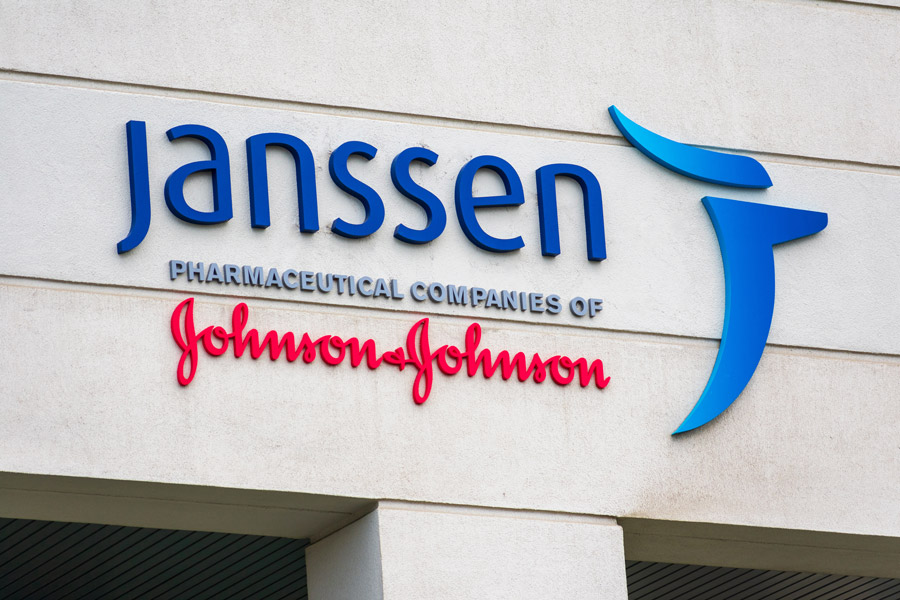Advertisment
FDA approves Talvey a first-in-class bispecific therapy for the treatment of patients with heavily pretreated multiple myeloma – Janssen Pharma

The Janssen Pharmaceutical Companies of Johnson & Johnson announced that the FDA has granted accelerated approval of Talvey (talquetamab-tgvs), a first-in-class bispecific antibody for the treatment of adult patients with relapsed or refractory multiple myeloma who have received at least four prior lines of therapy, including a proteasome inhibitor, an immunomodulatory agent, and an anti-CD38 antibody . This indication is approved under accelerated approval based on response rate and durability of response. Continued approval for this indication is contingent upon verification and description of clinical benefit in confirmatory trial(s).
Talvey
is a bispecific T-cell engaging antibody that binds to the CD3 receptor on the surface of T cells and G protein-coupled receptor class C group 5 member D (GPRC5D) expressed on the surface of multiple myeloma cells, non-malignant plasma cells and healthy tissue such as epithelial cells in keratinized tissues of the skin and tongue. Talvey is approved as a weekly or biweekly subcutaneous (SC) injection after an initial step-up phase, offering physicians the flexibility to determine the optimal treatment regimen for patients.
“The clinically meaningful efficacy and safety profile observed with talquetamab in heavily pretreated patients in this clinical trial, which included patients treated with prior BCMA-targeted bispecific or CAR-T cell therapy, has been notable,” said Ajai Chari, M.D., Director of Multiple Myeloma Program, Professor of Clinical Medicine at the University of California, San Francisco.* “Patients at this stage of disease have a poor prognosis. Talquetamab as a first-in-class therapy is a new option for patients with this difficult-to-treat blood cancer.”
The talquetamab Phase II MonumenTAL-1 study, which included patients who had received at least four prior lines of therapy and who were not exposed to prior T-cell redirection therapy (n=187), showed meaningful overall response rates (ORR). At the SC biweekly dose of 0.8 mg/kg, 73.6 percent of patients (95 percent Confidence Interval [CI], range, 63.0 to 82.4) achieved an ORR. With a median follow-up of nearly 6 (range, 0 to 9.5) months from first response among responders, 58 percent of patients achieved a very good partial response (VGPR) or better, including 33 percent of patients achieving a complete response (CR) or better. At the SC weekly dose of 0.4 mg/kg, 73.0 percent of patients (95 percent CI, range, 63.2 to 81.4) achieved an ORR. With a median follow-up of nearly 14 (range, 0.8 to 15.4) months from first response among responders, 57 percent of patients achieved a VGPR or better, including 35 percent of patients achieving a CR or better.
Responses were durable with a median duration of response not reached in the 0.8 mg/kg SC biweekly dose group and 9.5 months in the 0.4 mg/kg SC weekly dose group. Among patients receiving the 0.8 mg/kg SC biweekly dose, an estimated 85 percent of responders maintained response for at least 9 months.
The MonumenTAL-1 study also included 32 patients who were exposed to prior bispecific antibody or CAR-T cell therapy (94 percent B-cell maturation antigen [BCMA]-directed therapy) and had received at least four prior lines of therapy , including a proteasome inhibitor, an immunomodulatory agent, and an anti-CD38 monoclonal antibody, received Talvey at the 0.4 mg/kg SC weekly dose. With a median duration of follow-up of 10.4 months, 72 percent of patients (95 percent CI, range, 53 to 86) achieved an ORR per an Independent Review Committee assessment, and an estimated 59 percent of responders maintained response for at least 9 months.
The Safety Profile for Talvey includes a Boxed Warning for cytokine release syndrome (CRS) and neurologic toxicity including immune effector cell-associated neurotoxicity syndrome (ICANS); Warnings and Precautions include Oral Toxicity and Weight Loss, Infections, Cytopenias, Skin Toxicity, Hepatoxicity and Embryo-fetal toxicity. The most common adverse reactions ( greater than 20 percent) are pyrexia, CRS, dysgeusia, nail disorder, musculoskeletal pain, skin disorder, rash, fatigue, weight decreased, dry mouth, xerosis, dysphagia, upper respiratory tract infection, diarrhea, hypotension, and headache. The most common Grade 3 or 4 laboratory abnormalities (greater than 30 percent) are lymphocyte count decreased, neutrophil count decreased, white blood cell decreased, and hemoglobin decreased.





